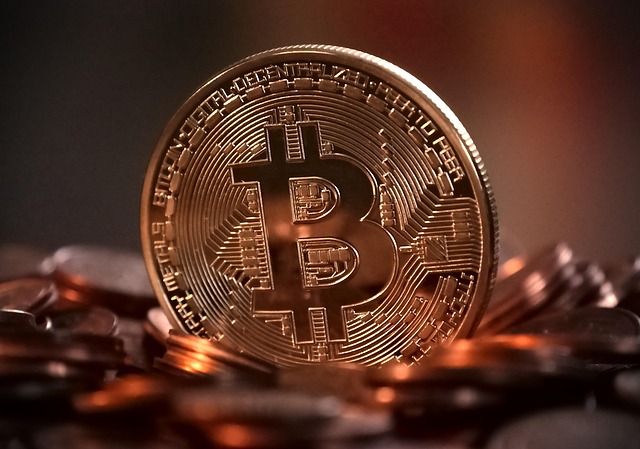Meanwhile raises $40M to bring BTC life insurance to inflation-prone economies
Crypto startup Meanwhile has raised $40 million to scale its Bitcoin-denominated life insurance business, targeting so-called “inflation-prone economies” where policyholders may seek alternatives to traditional fiat-based payouts.The Series A investment round was led by Framework Ventures and Fulgur Ventures, with additional participation from Xapo founder Wences Casares, the company disclosed on April 10. Meanwhile previously secured $20.5 million in seed funding backed by OpenAI CEO Sam Altman and others.Source: MeanwhilelifeRegulated by the Bermuda Monetary Authority, Meanwhile offers a whole life insurance policy denominated in Bitcoin (BTC), giving policyholders the ability to safeguard the value of their life insurance against currency debasement. Policyholders can access the value of their life insurance anytime through loans and tax-free partial withdrawals. Meanwhile co-founder Zac Townsend told Fortune that the company’s life insurance policies operate similarly to typical life insurance policies, but monthly premiums are paid in Bitcoin. When a policyholder passes away, their family receives the value of the claim entirely in BTC. The company’s policies are geared toward clients living in regions with high inflation or currency instability, Townsend said. Given the inflationary tendencies of Western economies and the extreme currency fluctuations in emerging markets, Meanwhile has cast a very wide net on its addressable market. Related: Bitcoin price could rally even as global trade war rages on — Here’s whyBitcoin and the inflation problemBitcoin’s deflationary design has made it a popular store of value for early cryptocurrency adopters, but its role as an inflation hedge in the traditional sense is subject to debate. A 2025 study that appeared in the Journal of Economics and Business determined that Bitcoin’s inflation-hedging abilities have weakened in recent years due to rising institutional adoption. The study referenced Bitcoin’s 60% drop in 2022 when US inflation surged to a 40-year high above 9%.However, some analysts may counter that claim by arguing that investors purchased Bitcoin during the pandemic on expectations that inflation would rise due to massive government stimulus.During this period, “Investors saw that inflation was coming, so they began buying bitcoin hand-over-fist,” said investor and analyst Anthony Pompliano.Regardless of whether Bitcoin meets the technical definition of an inflation hedge, the asset has significantly outperformed inflation, or the debasement of currency, since its inception. The Bitcoin price dipped below $80,000 on April 10 after the latest US inflation data triggered renewed volatility in the market. Nevertheless, the report showed a sharp deceleration in annual inflation in March, with the Consumer Price Index falling to 2.4% from 2.8% in February. The Bitcoin price experienced heavy intraday volatility following the latest US CPI data. Source: CointelegraphRelated: As Trump tanks Bitcoin, PMI offers a roadmap of what comes next
Trump’s tariff escalation exposes ‘deeper fractures’ in global financial system
Escalating trade tensions and renewed uncertainty in global markets are driving investors toward alternative assets, including Bitcoin and tokenized real-world assets (RWAs), as concerns mount over the long-term stability of the financial system.Global trade tensions continue pressuring investor sentiment despite US President Donald Trump announcing a 90-day pause on higher reciprocal tariffs on April 9, reverting the tariffs to the 10% baseline for most countries.At the same time, Trump escalated his tariffs on Chinese goods from 104% to 125%, the Financial Times reported on April 9.“President Trump’s tariff escalation marks a significant inflection point for global markets,” a move that signals “more than a trade disagreement,” said Teddy Pornprinya, co-founder of Plume — a layer-1 blockchain focused on tokenized real-world assets. He added:“It exposes deeper fractures in the global monetary system.”With both the US and China facing what he described as unsustainable debt levels, Pornprinya warned of increased reliance on inflationary tools, including the potential depreciation of the Chinese yuan.“These dynamics will test the resilience of every asset class” and inspire greater adoption for tokenized credit and private yield products that “aren’t exposed to sovereign devaluation games,” he said.Related: Bitcoin ETFs lose $326M amid ‘evolving’ dynamic with TradFi marketsThe tariff fears led tokenized gold trading volume to surge to a two-year high this week, topping $1 billion for the first time since the US banking crisis in 2023, Cointelegraph reported on April 10.Top tokenized gold assets, trading volume. Source: CoinGecko, Cex.ioOnchain real-world assets (RWAs) also surpassed the $20-billion all-time high on April 9, with tokenized private credit representing the lion’s share, or $12.7 billion of total RWA value, according to data from RWA.xyz.RWA global market dashboard. Source: RWA.xyzSome industry watchers said that Bitcoin’s lack of upside momentum may drive RWAs to a $50-billion all-time high before the end of 2025, as their increased liquidity will help RWAs attract a significant share of the $450-trillion global asset market.Related: Bitcoin’s safe-haven appeal grows during trade war uncertaintyTariffs are “US bargaining tool,” not lasting policy shiftDespite investor concerns, analysts at crypto exchange Bitfinex said the tariff hike may not represent a long-term policy shift.“We believe, however, that the threat of tariffs by the current US administration is a negotiating tool to be used to persuade other countries to lower tariffs on American manufactured goods and services and are unlikely to become permanent policy,” they told Cointelegraph.Source: Raoul PalRaoul Pal, founder and CEO of Global Macro Investor, also said that the tariff negotiations may only be “posturing” for the US to reach an agreement with China.The tone of the negotiations may dictate the recovery of global risk assets, including the crypto market, which has a 70% chance to bottom by June 2025 before recovering, Nansen analysts predicted.Magazine: Bitcoin ATH sooner than expected? XRP may drop 40%, and more: Hodler’s Digest, March 23–29
Standard Chartered and OKX pilot crypto, tokenized fund collaterals
Standard Chartered and cryptocurrency exchange OKX are piloting a new program allowing institutions to use crypto assets and tokenized money market funds (MMFs) as collateral.Announced on April 10, the collateral mirroring program enables off-exchange collateral usage while enhancing security by placing custody with a globally systemically important bank, according to a joint statement from the companies.The pilot has been launched under the regulatory oversight of the Dubai Virtual Asset Regulatory Authority, with Standard Chartered acting as a regulated custodian in the Dubai International Financial Centre (DIFC).The program launched in collaboration with crypto-friendly asset manager Franklin Templeton and features Brevan Howard Digital among the first institutions to trial the new capability.OKX clients to gain access to assets by Franklin TempletonAs part of the collaboration, OKX clients will have access to onchain assets developed by Franklin Templeton’s digital assets team.“We take an authentic approach, from directly investing in blockchain assets to developing innovative solutions with our in-house team,” Franklin Templeton’s head of digital assets, Roger Bayston, said, adding:“By ensuring assets are minted onchain, we enable true ownership, allowing them to move and settle at blockchain speed — eliminating the need for traditional infrastructure.”According to the announcement, Franklin Templeton will be one of the first in a “series of MMFs” that are expected to be offered under the program by Standard Chartered and OKX.Standard Chartered backs tokenized fundsIn the crypto lending industry, collateral is any blockchain-based asset used to secure loans from a lender as a security measure when taking out a loan. By allowing borrowers to pledge those assets, the lender guarantees that the loan is going to be repaid.Despite the high volatility of digital assets, Standard Chartered’s Margaret Harwood-Jones, global head of financing and securities services, is bullish on crypto collaterals as a major step in the evolution of institutional crypto services.A visual of the crypto lending process with collaterals and deposits. Source: CoinRabbitRelated: Xapo Bank launches Bitcoin-backed USD loans targeting hodlers“Our collaboration with OKX to enable the use of cryptocurrencies and tokenized MMFs as collateral represents a significant step forward in providing institutional clients with the confidence and efficiency they need,” Harwood-Jones said, adding:“By leveraging our established custody infrastructure, we are ensuring the highest standards of security and regulatory compliance, fostering greater trust in the digital asset ecosystem.”According to Ryan Taylor, group head of compliance at Brevan Howard, the program is another example of the ongoing innovation and institutionalization in the crypto industry.“As a significant investor in the digital assets space, we are thrilled to partner with industry leaders to further grow and evolve the crypto ecosystem globally,” he noted.Magazine: Memecoin degeneracy is funding groundbreaking anti-aging research
Atkins becomes next SEC chair: What’s next for the crypto industry
The crypto industry has welcomed the confirmation of American businessman and former US Securities and Exchange Commissioner Paul Atkins as chair of the agency.Atkins’ approval has taken months. He appeared before the Senate on March 27 to explain his intended approach to securities regulation in the United States, as well as his views on digital assets. Atkins will replace acting chair Mark Uyeda as head of the agency, which began unwinding a number of court cases and enforcement action against cryptocurrency firms when President Donald Trump took office. However, these actions don’t amount to clear guidance — yet.Now that Atkins is ready to take the helm, the blockchain industry is hoping for the guidance they’ve been wanting for years. So who is Paul Atkins, and what can the industry expect?Senator Cynthia Lummis celebrated the confirmation. Source: Cynthia LummisPaul Atkins wants to provide guardrails for the crypto industryAn alumnus of Wofford College and Vanderbilt, Atkins has a long career in finance. He initially worked at Davis Polk and Wardwell, before serving on the staff of two former chairmen of the SEC from 1990-1994.Notably, under Chairman Breeden, he assisted in efforts to decrease barriers to entry to capital markets for small businesses and middle market companies.After working at PwC and Coopers and Lyband, Atkins joined the SEC again as commissioner at the appointment of former President George W. Bush.At the SEC, Atkins focused on improving financial services compliance with SEC regulations. He worked with law enforcement agencies in cases where investors were harmed. This included the Bennett Funding incident, a $1 billion Ponzi scheme by the leasing company in which 20,000 investors lost much of their investments. After leaving this role as commissioner, he founded and led Potomak Global Partners, a consultancy for banks and financial services firms. Ahead of his 52-44 confirmation vote — largely along party lines — Atkins faced a grilling from the Senate Committee on Banking, Housing and Urban Affairs. At the hearing, Atkins said the “top priority” of his tenure as chair would be to “provide a firm regulatory foundation for digital assets through a rational, coherent and principled approach.”Related: Trump’s pick for SEC chair makes it out of committeeHe said that the current “ambiguous and non-existent regulation of digital assets” harms innovation and the sector. More broadly, he claimed that world industry wants to invest in America, but “the current regulatory environment for our financial system inhibits investment and often punishes success.”Congressman Tom Emmer said of Atkins’ nomination “It’s gonna be great,” stating that the former Chair Gary Gensler under ex-President Joe Biden had “set a pretty low bar.” Emmer said the SEC can soon provide the clarity the industry expects: “We need stablecoins. We need market structure. We need to have clarity and certainty in the system.”Faryar Shirzad, chief policy officer at Coinbase, said the confirmation was the “dawn of an era.”Source: Faryar ShirzadSEC actions under Uyeda point to further crypto priorities While no one has a crystal ball, recent analysis from Cointelegraph shows that the recent dismissals of court cases and enforcement actions may indicate the future direction of crypto regulation — or lack of regulation — by the SEC. Related: US gov’t actions give clue about upcoming crypto regulationThe dismissal of cases revolving around “the unregistered sale and offer of securities under the Securities Act of 1933 and acting unregistered as a broker, dealer, clearing agency and exchange” suggests that the SEC may not consider the assets involved as securities.This idea is bulwarked by recent statements from the SEC that proof-of-work mining, pooled mining and dollar-backed stablecoins are not subject to securities laws. On the whole, this suggests that the SEC does not consider cryptocurrencies to be subject to securities law. Crypto agenda could be hamstrung by recent SEC dismissalsOne point of friction in Aktins’ ascension to SEC chair is the recent spate of dismissals of SEC staff. The Trump administration’s efforts to cut certain types of government spending through the temporary committee of the Department of Government Efficiency (DOGE) has not spared the securities regulator. As reported by Politico in March, a combination of different buyout and dismissal programs will effectively get rid of 10% of the agency’s 5,000-strong workforce in the coming months. One source mentioned in the report suggested the total could be closer to 15%.DOGE leader Elon Musk — who himself has run afoul of the SEC numerous times throughout his career — is reportedly seeking further cuts to the SEC’s already lacerated budget and staff. A group of prominent securities law professors known as the “Shadow SEC,” have raised the alarm about the recent cuts, saying the policy is “diminishing the SEC’s staff will lead to chaotic financial markets, longer review times for registration statements, and weakened enforcement capabilities.”Creating a new framework for digital assets, especially from scratch, could take longer if the agency is bleeding staff and expertise while Musk wields a scythe in Washington. Magazine: Memecoin degeneracy is funding groundbreaking anti-aging research
AI-generated content needs blockchain before trust in digital media collapses
Opinion by: Roman Cyganov, founder and CEO of AntixIn the fall of 2023, Hollywood writers took a stand against AI’s encroachment on their craft. The fear: AI would churn out scripts and erode authentic storytelling. Fast forward a year later, and a public service ad featuring deepfake versions of celebrities like Taylor Swift and Tom Hanks surfaced, warning against election disinformation. We are a few months into 2025. Still, AI’s intended outcome in democratizing access to the future of entertainment illustrates a rapid evolution — of a broader societal reckoning with distorted reality and massive misinformation.Despite this being the “AI era,” nearly 52% of Americans are more concerned than excited about its growing role in daily life. Add to this the findings of another recent survey that 68% of consumers globally hover between “somewhat” and “very” concerned about online privacy, driven by fears of deceptive media. It’s no longer about memes or deepfakes. AI-generated media fundamentally alters how digital content is produced, distributed and consumed. AI models can now generate hyper-realistic images, videos and voices, raising urgent concerns about ownership, authenticity and ethical use. The ability to create synthetic content with minimal effort has profound implications for industries reliant on media integrity. This indicates that the unchecked spread of deepfakes and unauthorized reproductions without a secure verification method threatens to erode trust in digital content altogether. This, in turn, affects the core base of users: content creators and businesses, who face mounting risks of legal disputes and reputational harm. While blockchain technology has often been touted as a reliable solution for content ownership and decentralized control, it’s only now, with the advent of generative AI, that its prominence as a safeguard has risen, especially in matters of scalability and consumer trust. Consider decentralized verification networks. These enable AI-generated content to be authenticated across multiple platforms without any single authority dictating algorithms related to user behavior.Getting GenAI onchainCurrent intellectual property laws are not designed to address AI-generated media, leaving critical gaps in regulation. If an AI model produces a piece of content, who legally owns it? The person providing the input, the company behind the model or no one at all? Without clear ownership records, disputes over digital assets will continue to escalate. This creates a volatile digital environment where manipulated media can erode trust in journalism, financial markets and even geopolitical stability. The crypto world is not immune from this. Deepfakes and sophisticated AI-built attacks are causing insurmountable losses, with reports highlighting how AI-driven scams targeting crypto wallets have surged in recent months. Blockchain can authenticate digital assets and ensure transparent ownership tracking. Every piece of AI-generated media can be recorded onchain, providing a tamper-proof history of its creation and modification. Akin to a digital fingerprint for AI-generated content, permanently linking it to its source, allowing creators to prove ownership, companies to track content usage, and consumers to validate authenticity. For example, a game developer could register an AI-crafted asset on the blockchain, ensuring its origin is traceable and protected against theft. Studios could use blockchain in film production to certify AI-generated scenes, preventing unauthorized distribution or manipulation. In metaverse applications, users could maintain complete control over their AI-generated avatars and digital identities, with blockchain acting as an immutable ledger for authentication.End-to-end use of blockchain will eventually prevent the unauthorized use of AI-generated avatars and synthetic media by implementing onchain identity verification. This would ensure that digital representations are tied to verified entities, reducing the risk of fraud and impersonation. With the generative AI market projected to reach $1.3 trillion by 2032, securing and verifying digital content, particularly AI-generated media, is more pressing than ever through such decentralized verification frameworks.Recent: AI-powered romance scams: The new frontier in crypto fraudSuch frameworks would further help combat misinformation and content fraud while enabling cross-industry adoption. This open, transparent and secure foundation benefits creative sectors like advertising, media and virtual environments.Aiming for mass adoption amid existing toolsSome argue that centralized platforms should handle AI verification, as they control most content distribution channels. Others believe watermarking techniques or government-led databases provide sufficient oversight. It’s already been proven that watermarks can be easily removed or manipulated, and centralized databases remain vulnerable to hacking, data breaches or control by single entities with conflicting interests.It’s quite visible that AI-generated media is evolving faster than existing safeguards, leaving businesses, content creators and platforms exposed to growing risks of fraud and reputational damage.For AI to be a tool for progress rather than deception, authentication mechanisms must advance simultaneously. The biggest proponent for blockchain’s mass adoption in this sector is that it provides a scalable solution that matches the pace of AI progress with the infrastructural support required to maintain transparency and legitimacy of IP rights. The next phase of the AI revolution will be defined not only by its ability to generate hyper-realistic content but also by the mechanisms to get these systems in place on time, significantly, as crypto-related scams fueled by AI-generated deception are projected to hit an all-time high in 2025. Without a decentralized verification system, it’s only a matter of time before industries relying on AI-generated content lose credibility and face increased regulatory scrutiny. It’s not too late for the industry to consider this aspect of decentralized authentication frameworks more seriously before digital trust crumbles under unchecked deception.Opinion by: Roman Cyganov, founder and CEO of Antix.This article is for general information purposes and is not intended to be and should not be taken as legal or investment advice. The views, thoughts, and opinions expressed here are the author’s alone and do not necessarily reflect or represent the views and opinions of Cointelegraph.
How Bitcoin’s three pillars are about to fix money — StarkWare CEO
Bitcoin wasn’t supposed to just sit still.When Satoshi Nakamoto released the white paper in 2008, it wasn’t a blueprint for digital gold; it was a peer-to-peer cash system. But fast-forward to today, and Bitcoin’s biggest critics and supporters alike often agree on one thing: It doesn’t really work like money, at least not yet.In the latest episode of The Clear Crypto Podcast, hosts Nathan Jeffay and Gareth Jenkinson speak with Eli Ben-Sasson, the co-founder of StarkWare and one of the leading minds in cryptographic scaling. His message? That might be about to change.Bitcoin’s three pillarsBen-Sasson lays out a compelling framework for how Bitcoin can evolve — not by abandoning its principles, but by scaling them. He describes three core pillars that need to align in order for Bitcoin to fulfill its promise. Broadness, integrity and verifiability, according to Ben-Sasson, are concrete, technical targets for Bitcoin’s widespread adoption and useability. Not only that, but the tools to hit these targets already exist. The reintroduction of a long-dormant opcode, OP_CAT, could be the first domino. “Nine lines of code,” he said, “that would make Bitcoin programmable again.”Store of value or economic backboneRight now, Bitcoin is often described as digital gold, a pristine, untouchable store of value. But Ben-Sasson wants to see it function more like a digital economy: permissionless, inclusive and usable in everyday transactions. That means rethinking what Bitcoin is for and upgrading how it works.“If we don’t make Bitcoin more useful, we risk making it irrelevant.”The conversation touches on everything from the politics of Bitcoin governance to the role of zero-knowledge proofs and layer-2s in building scalable, decentralized systems. Related: Jack Dorsey pushes Signal to adopt Bitcoin paymentsIt also explores what it would take to build money that works for everyone, not just the technically elite or financially privileged.“We are not in a situation where Bitcoin is a system that today can allow any two parties to transact without any trusted intermediary. We’re simply not there. To me, that’s the start, middle and end of of the reason why things need to change.”To hear the full conversation on The Clear Crypto Podcast, listen to the full episode on Cointelegraph’s Podcasts page, Apple Podcasts or Spotify. And don’t forget to check out Cointelegraph’s full lineup of other shows! Magazine: SEC’s U-turn on crypto leaves key questions unanswered
Nasdaq files to list VanEck spot Avalanche ETF
American stock exchange Nasdaq has filed an application with the United States Securities and Exchange Commission (SEC) to list and trade shares of the VanEck Avalanche Trust, a proposed exchange-traded fund (ETF) designed to offer indirect exposure to the AVAX token.The filing, signed by Nasdaq’s executive vice president and chief legal officer John Zecca, requests approval to list and trade shares of the VanEck Avalanche ETF under the company’s Rule 5711(d), which governs the trading of commodity-based trust shares. If approved, the VanEck Avalanche ETF would allow investors to gain exposure to the Avalanche (AVAX) price without directly holding them. The ETF would hold the tokens and track their price, allowing investors to profit from the token’s performance without needing crypto wallets or using digital asset trading platforms. According to the filing, asset manager VanEck Digital Assets will sponsor the trust, while a third-party custodian will hold all the Avalanche tokens on the trust’s behalf. Excerpt of Nasdaq’s Avalanche ETF listing application. Source: NasdaqRelated: XRP ETF: Here are the funds awaiting SEC approval so farVanEck joins Avalanche ETF raceThe filing follows VanEck’s efforts to register a spot Avalanche ETF in the US. On March 10, the asset manager registered the crypto investment product as a trust corporate service company in Delaware. The application marks the fourth standalone crypto ETF product submitted by VanEck, alongside its Bitcoin (BTC), Ether (ETH) and Solana (SOL) ETF products. In 2024, VanEck filed for a spot Solana ETF, becoming one of the first issuers to file for a SOL-based ETF. On March 14, VanEck’s formal application for the Avalanche ETF was shared publicly via social media, signaling the firm’s commitment to the product.Grayscale Investments is also pursuing an AVAX-backed ETF. On March 28, Nasdaq applied to list Grayscale’s Avalanche ETF. The product would be a conversion of a close-ended AVAX fund launched by the asset manager in August 2024. Despite the interest in exchange-traded products based on AVAX, the token suffered massive losses in 2025 as the broader crypto markets saw a downturn. On April 10, the AVAX token traded at $18, which is 56% less than its January high of $41. Magazine: XRP win leaves Ripple and industry with no crypto legal precedent set
Cosmos launches Eureka to connect Ethereum and IBC networks
Cosmos, a blockchain network aiming to become the “internet of blockchains,” has launched Eureka, an interoperability layer designed to link its inter-blockchain communication (IBC) protocol with Ethereum.According to an April 10 announcement, Eureka has expanded the Cosmos IBC protocol, changing IBC from an ecosystem standard “to a universal interoperability protocol,” setting the hub on a course to become the home of multichain apps.Cosmos projects are integrating into IBC Eureka. Source: CosmosWith the introduction of Eureka, many Cosmos-based applications and blockchains are now accessible to more users by expanding IBC to the Ethereum network. With the new protocol, developers can reportedly build multichain apps across multiple ecosystems without fragmenting the user base.Related: Cosmos co-founder proposes peer-to-peer clearing system in white paperThe announcement said that most projects rely on bridges for interoperability, resulting in the introduction of intermediaries as well as user and liquidity fragmentation. With bridges, users can simply move assets between blockchains, while with Eureka, developers promise to deliver native interoperability.Cosmos Hub Integration Image. Source: CosmosCointelegraph reached out to the Interchain Foundation, the organization behind Cosmos, but did not receive a response by publication.How IBC Eureka worksEureka relies on a distribution zone allowing developers to access all IBC connections, users, liquidity and services without additional infrastructure. The Cosmos Hub also allows users to access apps, services and assets across the included ecosystems.Related: Cosmos ecosystem rocked by North Korean developer allegationsSome early use cases include Bitcoin staking protocol Babylon, whose users will now be able to transfer Bitcoin liquid staking tokens from Ethereum to Babylon’s Cosmos-based chain. Similarly, decentralized finance (DeFi) protocol Elys will enable trading with Wrapped Ether (WETH), Wrapped Bitcoin (WBTC) and USDt (USDT) from Ethereum.More integrations comingIn the future, developers promise that users will be able to leverage Eureka-powered multichain features in major decentralized exchange (DEX) dYdX. Real-world asset tokenization platform Mantra will also reportedly bridge capital from Ethereum into Cosmos-based real-estate markets, staking infrastructure and permissioned DeFi applications.According to the announcement, IBC — which Eureka upgrades — has facilitated an average of up to $3 billion in transaction volume among more than 115 blockchains every month since its launch. Still, the integration was far from seamless for blockchains that were not part of the Cosmos ecosystem.Magazine: Arbitrum co-founder skeptical of move to based and native rollups: Steven Goldfeder








